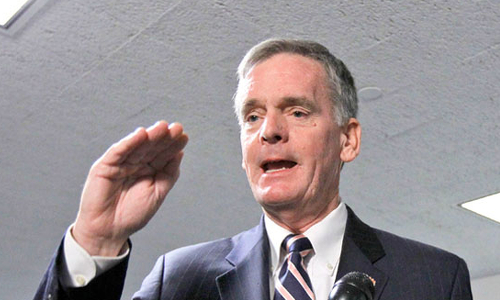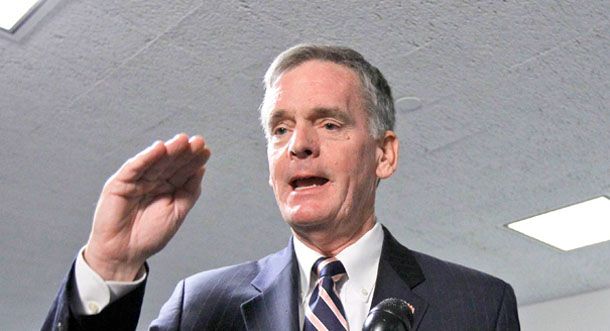

According to the nonpartisan Center for Responsive Politics, Exelon has spent nearly $8 million on political campaigns since 2008, more than any other private electric utility. Over that same time period, Exelon also spent $34.6 million on lobbying, putting it in the top 10 among electric utilities. In addition, Exelon is one of the biggest corporate donors to trade associations, pro-business alliances and other politically active nonprofits, according to a January report by the Center for Public Integrity. In 2012, Exelon gave $13.6 million to approximately two dozen nonprofits, the second-largest amount voluntarily disclosed among the Fortune 300 companies CPI reviewed.
Exelon’s lobbyists also have enjoyed unparalleled access to the Obama Administration, according to an Aug. 2012 New York Times exposé. The Times provided several examples of how the company exerted its influence, including delaying and weakening a proposed EPA rule to prevent power plant water intake systems from killing fish and other aquatic life.
The Times also reported that Exelon joined with NEI and other plant owners to challenge the NRC’s post-Fukushima safety recommendations. Specifically, they opposed a proposed requirement that they install filters on hardened vents at 31 boiling water reactors to help prevent radiation discharges into the environment in the event of an accident. Those reactors are similar in design to the six at the Fukushima facility.
Filtered vents are now required in Japan and much of Europe, and the Nuclear Regulatory Commission technical staff recommended they be installed here. But Exelon and the rest of the U.S. nuclear industry, loathe to spend hundreds of millions of dollars on filters, insist there are other ways to achieve the same result and lobbied hard to avoid the upgrade.
In early 2013, more than 50 of the industry’s friends in Congress sent letters to the NRC requesting that the commissioners reject the filtered vent recommendation and slow down the implementation of other post-Fukushima safety reforms. A number of the signatories have reactors in or near their districts, and most have received sizeable campaign contributions from the nuclear industry. Two sign-on letters, for example, came from House members, one from 21 Republicans and the other from 26 Democrats. Since 2008, the nuclear industry gave more than $3.32 million to the 41 of the letters’ 47 signatories. Roughly 30 percent of that funding came from Exelon.
The industry prevailed—for the time being. Despite the fact that the NRC technical staff provided ample evidence that filtered vents are a sensible, cost-effective measure that would protect nearby communities, NRC commissioners issued an order requiring owners of the 31 reactors to upgrade their hardened vents that stopped short of requiring filters. Instead, the commissioners gave their staff two years to review all the options for reducing radiation releases. The NRC will then open the proposed rule to public comment and finalize it by the end of 2017.
A Tool to Squelch Renewables?
Exelon and NEI clearly know their way around Washington. But some arguments sound a lot less self-serving when they appear to come from a disinterested third-party. A case in point is Nuclear Matters’ contention that the U.S. has to maintain its entire fleet of nuclear power plants to stave off the worst consequences of global warming.
To be sure, nuclear power is the largest source of low-carbon electricity in the country, a major selling point. But Nuclear Matters’ website ominously warns that “the closings of just a handful of nuclear energy plants would have a devastating environmental impact on our country and make it nearly impossible for us to meet our clean energy or carbon reduction goals.”
Is that right? Not quite. As it turns out, ramping up renewables—especially wind and solar—and energy efficiency could replace a significant amount of nuclear generation, and do it in a hurry.
Let’s look at the numbers. What would happen if Exelon closed the five reactors in Illinois that energy analysts have identified as ripe for retirement? The five reactor—one at Clinton and two each at Byron and Quad Cities—have a rated capacity of 5,203 megawatts (MW).
In 2012 alone, the U.S. wind industry installed the functional equivalent. It added 13,131 MW of new capacity, which, at a 35 percent capacity factor—that is, the percentage of time the generator is actually producing power—would produce about the same amount of electricity as Exelon’s five reactors operating at a 90 percent capacity factor. According to the American Wind Energy Association, there is currently 17,200 MW of new wind capacity under construction or with signed power purchase agreements that will be built over the next two to three years. Those wind farms will produce the equivalent output of more than six typical 1,100 MW nuclear reactors.
Now add solar power to the mix. According the Solar Energy Industries Association, the solar industry installed 8,120 MW of new capacity in 2012 and 2013, and is projected to install another 25,000 MW by 2016, which altogether will produce the equivalent output of about seven nuclear reactors.
And let’s not forget energy efficiency. The American Council for an Energy Efficient Economy projects that by 2020, existing energy efficiency resources standards in 26 states will save the equivalent output of more than 27 reactors.
In other words, renewables and efficiency could go a long way to replace nuclear plants—and retiring coal plants—to dramatically reduce U.S. carbon emissions. While more transmission capacity would be needed for wind and utility-scale solar projects, there is progress on this front. In addition to four new transmission projects constructed last year, which could support 10,000 MW of new wind capacity, there are 15 projects in advanced stages of development that could support an additional 60,000 MW of wind in Plains, Midwestern and Western states by 2018. These transmission projects also could open up new markets for nuclear plants.
But you’re not going to hear about the potential of renewables and energy efficiency from Nuclear Matters. Exelon started the front group for the same reason NEI created the CASEnergy Coalition: to prop up the nuclear industry. And not only does Exelon want state and federal authorities to rescue its financially ailing reactors, it also has another goal in mind. A key component of Exelon’s game plan is to hamstring its low-carbon competition, namely the wind and solar industries.
Elliott Negin is the director of news and commentary at the Union of Concerned Scientists. Steve Clemmer, UCS director of energy research and analysis, and Mike Jacobs, a UCS senior energy analyst, contributed to this blog. Correction: This blog has been corrected to reflect the fact that it is not clear that Nuclear Matters’ spokespeople are being paid for their services.
——–
YOU MIGHT ALSO LIKE
NY Times Editorial Board Delivers a ‘Prudent’ Message of Nuclear Abandonment
Fukushima-Style Nuclear Power Plant in Washington Is a Seismic Timebomb
‘Nuclear Outlaw’ Power Plants Take Their Time Complying With Federal Fire Regulations
——–

 233k
233k  41k
41k  Subscribe
Subscribe 
